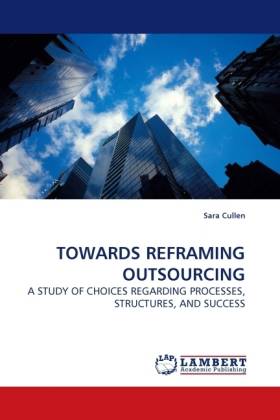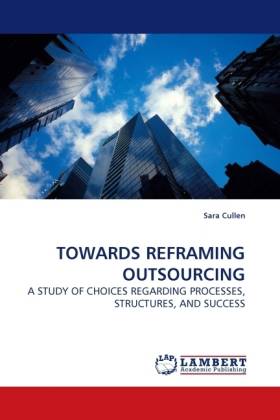
- Afhalen na 1 uur in een winkel met voorraad
- Gratis thuislevering in België vanaf € 30
- Ruim aanbod met 7 miljoen producten
- Afhalen na 1 uur in een winkel met voorraad
- Gratis thuislevering in België vanaf € 30
- Ruim aanbod met 7 miljoen producten
Zoeken
TOWARDS REFRAMING OUTSOURCING
A STUDY OF CHOICES REGARDING PROCESSES, STRUCTURES, AND SUCCESS
Sara Cullen
Paperback | Engels
€ 77,95
+ 155 punten
Omschrijving
Research into outsourcing has attempted to help firms achieve greater success. However, along with the mix of success and failure in practice has come mixed advice. The studies propose a range of recipes, but problems continue unabated. Despite over a decade of research into IT outsourcing (ITO), no comprehensive models of ITO processes, structures, or success have emerged. This research achieves a degree of unification by developing and testing three frameworks for decision- making: 1) a process framework consisting of a four- phase Outsourcing Lifecycle , 2) a taxonomic framework, Configuration , for classifying different ITO structures, and 3) a conceptual framework for measuring financial, operational, and strategic success from outsourcing. These frameworks were developed through analysis of 100 cases, three surveys, and the literature. The frameworks were then tested via in-depth interviews in seven large Australian organizations. This thesis demonstrates that ITO has more complex decisions than has been recognized. Its contribution is guidance on what decisions must be made and the potential issues each decision creates.
Specificaties
Betrokkenen
- Auteur(s):
- Uitgeverij:
Inhoud
- Aantal bladzijden:
- 296
- Taal:
- Engels
Eigenschappen
- Productcode (EAN):
- 9783838320410
- Uitvoering:
- Paperback

Alleen bij Standaard Boekhandel
+ 155 punten op je klantenkaart van Standaard Boekhandel
Beoordelingen
We publiceren alleen reviews die voldoen aan de voorwaarden voor reviews. Bekijk onze voorwaarden voor reviews.











